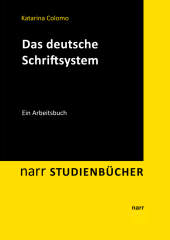
The Typographic Imaginary in Early Modern English Literature
Sorozatcím: Material Readings in Early Modern Culture;
-
20% KEDVEZMÉNY?
- A kedvezmény csak az 'Értesítés a kedvenc témákról' hírlevelünk címzettjeinek rendeléseire érvényes.
- Kiadói listaár GBP 42.99
-
20 538 Ft (19 560 Ft + 5% áfa)
Az ár azért becsült, mert a rendelés pillanatában nem lehet pontosan tudni, hogy a beérkezéskor milyen lesz a forint árfolyama az adott termék eredeti devizájához képest. Ha a forint romlana, kissé többet, ha javulna, kissé kevesebbet kell majd fizetnie.
- Kedvezmény(ek) 20% (cc. 4 108 Ft off)
- Kedvezményes ár 16 430 Ft (15 648 Ft + 5% áfa)
Iratkozzon fel most és részesüljön kedvezőbb árainkból!
Feliratkozom
20 538 Ft

Beszerezhetőség
Becsült beszerzési idő: A Prosperónál jelenleg nincsen raktáron, de a kiadónál igen. Beszerzés kb. 3-5 hét..
A Prosperónál jelenleg nincsen raktáron.
Why don't you give exact delivery time?
A beszerzés időigényét az eddigi tapasztalatokra alapozva adjuk meg. Azért becsült, mert a terméket külföldről hozzuk be, így a kiadó kiszolgálásának pillanatnyi gyorsaságától is függ. A megadottnál gyorsabb és lassabb szállítás is elképzelhető, de mindent megteszünk, hogy Ön a lehető leghamarabb jusson hozzá a termékhez.
A termék adatai:
- Kiadás sorszáma 1
- Kiadó Routledge
- Megjelenés dátuma 2021. március 31.
- ISBN 9780367787035
- Kötéstípus Puhakötés
- Terjedelem216 oldal
- Méret 229x152 mm
- Súly 400 g
- Nyelv angol 150
Kategóriák
Rövid leírás:
At its broadest level, this book contributes to an understanding of how printing changed early modern English literary culture. The author discusses printers’ manuals, William Caxton’s paratexts, Robert Copland’s dramatic dialogues, the prose fictions of William Baldwin, George Gascoigne and Thomas Nashe, and the courtly poetry of Edmund Spenser. T
TöbbHosszú leírás:
The typographic imaginary is an aesthetic linking authors from William Caxton to Alexander Pope, this study centrally contends. Early modern English literature engages imaginatively with printing and this book both characterizes that engagement and proposes the typographic imaginary as a framework for its analysis. Certain texts, Rachel Stenner states, describe the people, places, concerns, and processes of printing in ways that, over time, generate their own figurative authority. The typographic imaginary is posited as a literary phenomenon shared by different writers, a wider cultural understanding of printing, and a critical concept for unpicking the particular imaginative otherness that printing introduced to literature. Authors use the typographic imaginary to interrogate their place in an evolving media environment, to assess the value of the printed text, and to analyse the roles of other text-producing agents. This book treats a broad array of authors and forms: printers’ manuals; William Caxton’s paratexts; the pamphlet dialogues of Robert Copland and Ned Ward; poetic miscellanies; the prose fictions of William Baldwin, George Gascoigne, and Thomas Nashe; the poetry and prose of Edmund Spenser; writings by John Taylor and Alexander Pope. At its broadest, this study contributes to an understanding of how technology changes cultures. Located at the crossroads between literary, material, and book historical research, the particular intervention that this work makes is threefold. In describing the typographic imaginary, it proposes a new framework for analysis of print culture. It aims to focus critical engagement on symbolic representations of material forms. Finally, it describes a lineage of late medieval and early modern authors, stretching from the mid-fifteenth to the mid-eighteenth centuries, that are linked by their engagement of a particular aesthetic.
TöbbTartalomjegyzék:
Contents
List of Figures v
Acknowledgements vi
Note on Quotation vii
Abbreviations viii
Introduction: Print and the Difference it Makes 1
Implications 7
Critical Mapping 16
Cases 26
Chapter 1: Instructional Texts and Print Symbolism: Christopher Plantin, Hieronymus Hornschuch, and Joseph Moxon 51
Processes 55
People 69
Conclusion 77
Chapter 2: An Emergent Typographic Imaginary in William Caxton’s Paratexts 86
Life in Literature, Diplomacy, and Commerce 88
The Benefits of Printing in Recuyell of the Historyes of Troye 90
Imagined Typographic Space 96
Reorganising Continuity: Mirrour of the World 104
Conclusion 112
Chapter 3: Robert Copland, Thomas Blague, and the Printer-Author Dialogue 124
Printer-Author Dialogue and its Mutations 126
Characterising the Printer: Gatekeepers of the Press 130
Print and Metacommunication: Uses of the Dialogue Form 145
Conclusion 153
Chapter 4: Protestant Printing and Humanism in Beware the Cat: Undoing Printing 164
Protestant Printer and Humanist Scholar 168
Dead Bodies and Printer’s Devils 174
Printing and Penning 178
Conclusion 183
Chapter 5: George Gascoigne and Richard Tottel: Negotiating Manuscript and Print in the Poetic Miscellany 193
Typographic Value in the Prefatory Poses of A Hundreth Sundrie Flowres 199
The Benefits of Printing in The Posies of George Gascoigne Esquire 209
Conclusion 215
Chapter 6: Edmund Spenser’s Early and Mid Career: Public Image and Machine Horror
223
Early Career Self-Presentation: The Shepeardes Calender and Three Proper, and Wittie, Familiar Letters 225
Monstrous Typographic Fertility in The Faerie Queene 232
Resonant Errour in ‘The Teares of the Muses’ 244
Conclusion 247
Chapter 7 St Paul’s Churchyard and the Meanings of Print: Pierce Penilesse His Supplication to the Divell 259
Nashe’s Mosaic of the Print Trade 266
Waste and Matter 274
The Figurative Authority of Print 280
Conclusion 282
Conclusion: Love and Loathing in Grub Street 289
Több












